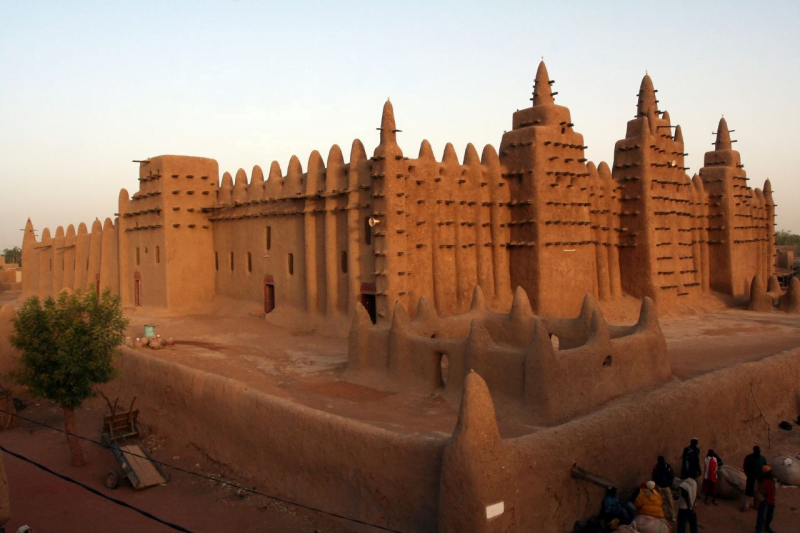The Great Mosque of Djenne in Mali.

The Great Mosque of Djenne is located in the Sahel region in Djenne, Mali. Considered the largest adobe structure in the world, presents a traditional construction in the area, including Arabic influences. The date of its construction is unknown, but is believed to date from the year 1200 or 1330, judging by the early writings that mention the mosque.
Djenné, in central Mali, is one of the oldest cities in sub-Saharan Africa. It stands on an island in the Niger Delta and for centuries was an important commercial hub by passing valuable goods such as salt, gold and slaves. The Great Mosque, the largest brick building in the world, is considered one of the greatest achievements in the history of African architecture.
However, the Great Mosque of Djenne is relatively modern since it was built in 1907. It was built on the ruins of the old thirteenth century mosque destroyed by French colonial troops of General Louis Archinard in April 1893. No pictures, no drawings or photographs of the old mosque of Djenne, although it tried to respect its original form at the time of reconstruction.
The walls of the Great Mosque are made of mud bricks called Férey, coated with a mud plaster which gives the building its regular appearance and homogeneous. The beams looming palm branches abroad were included in the building to reduce cracking caused by frequent and drastic changes in temperature and humidity. They also serve as makeshift scaffolding for maintenance repairs are performed each year.
These walls insulate the building from heat during the day, likewise, at nightfall protect the interior of the cold desert, and they have absorbed enough heat. To protect the Great Mosque of water damage, in particular by the Bani River floods, the entire structure was built on a raised platform height of 3 meters. A set of six steps, each decorated with pinnacles, leading to the entrance of the mosque.
So we are not facing any building, on the contrary, the architects of the mosque of Djenne drank from traditional sources of the architecture of the region and showed great adaptability certainly even hostile natural environment. Today is a jewel that proudly display Malian tourists and visitors.
The historic areas of Djenné, including the Great Mosque, were designated a World Heritage Site by UNESCO in 1988. Unfortunately you can not see the inside if you travel to Mali, access is permitted to the faithful, but we still have the pleasure of admiring their beauty and originality from outside.
